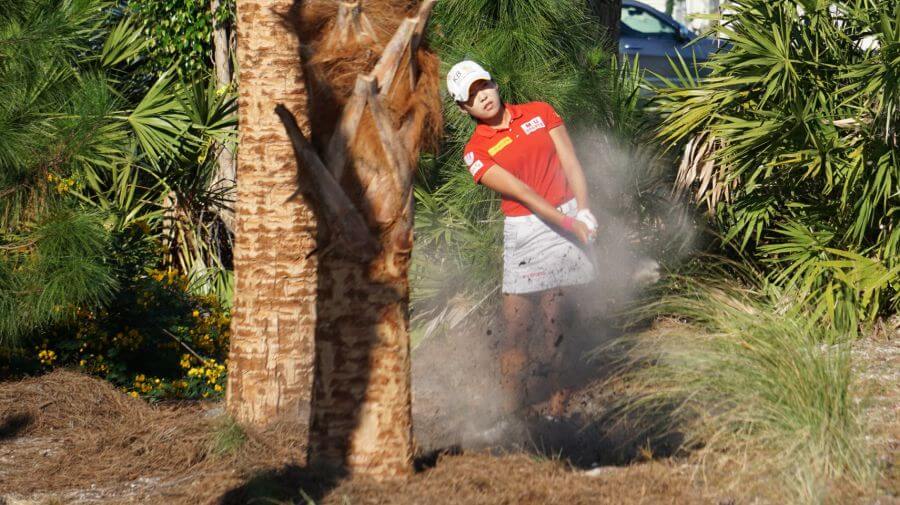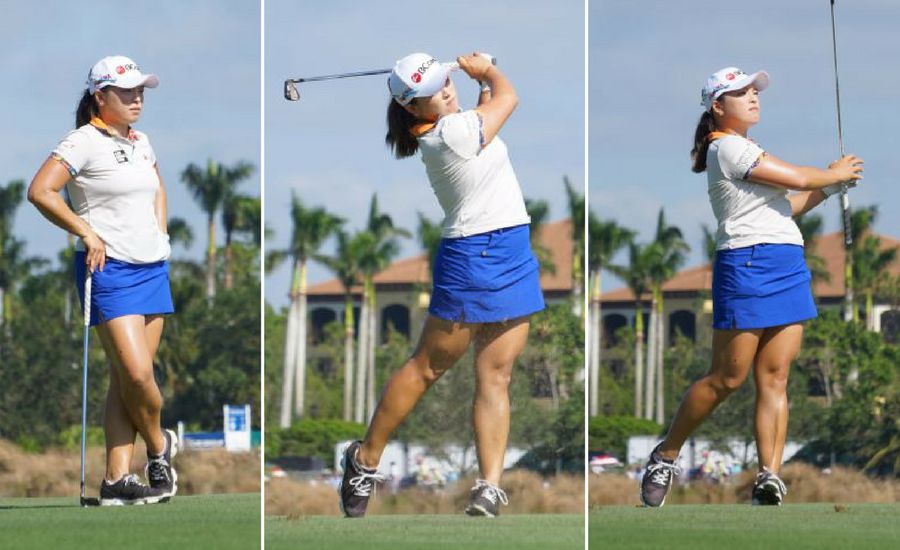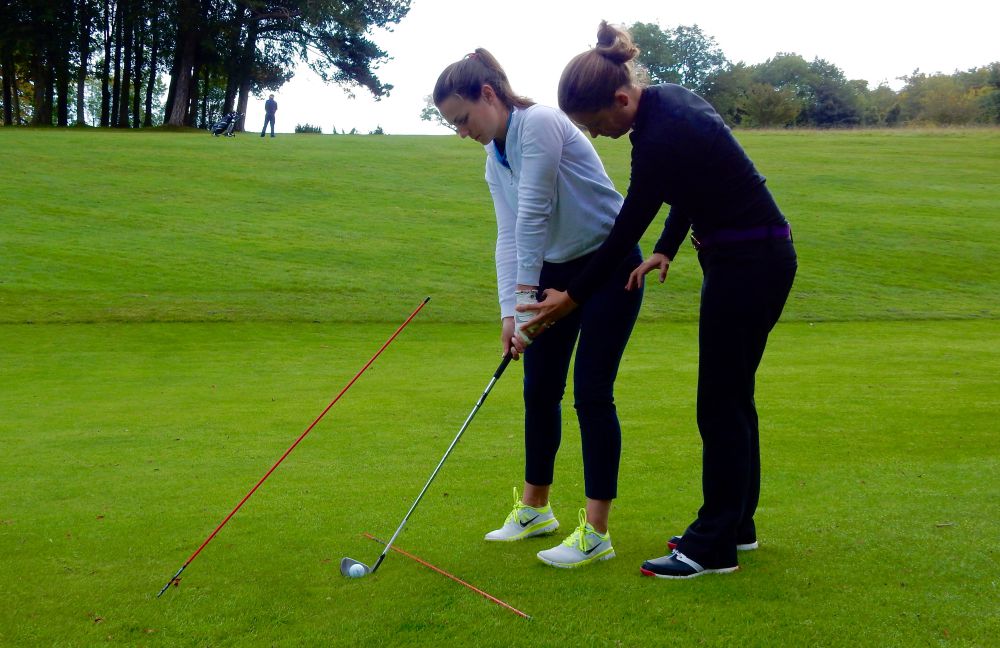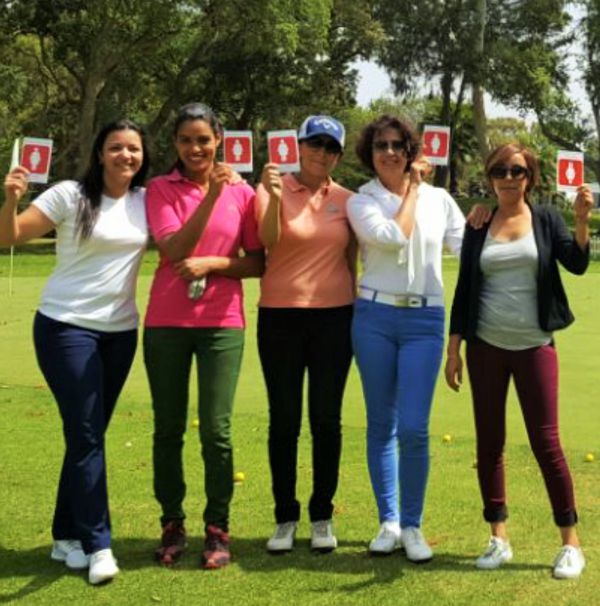If you want to learn to play golf, it can be overwhelming. I reviewed many websites advertised for “new” golfers, and they all assume too much knowledge. Although I am not a professional golf instructor, as a former educator, I understand the art of teaching.
So, if you are a “never-ever” golfer or are very new to the game, here’s my advice:
LESSON ONE
Your first introduction to the game should be a 30-60 minute “Tour of the Course” lesson. And it’s fun to take this lesson with friends who are also new to the game. Many golf professionals don’t think about a “course-tour” as a lesson. But, learning to play golf without understanding the golf course would be like learning to play basketball without a hoop or soccer without a goalie box.
On your Tour of the Course lesson – and it’s best to use a golf cart for this lesson – begin at a “tee box” (technically it is called “Teeing Ground”) on an easy hole. The instructor should explain the different sets of tees for different playing abilities. Ask to see the scorecard and compare the numbers and tees on the scorecard to the tee where you are standing.
GREAT ONLINE VIDEO TOUR OF GOLF COURSE
There is one video online that is perfect for seeing what a golf course and the sets of tees look like. You can stop the video on any hole to watch it more slowly. And it doesn’t have sound or music or advertisements.

Notice that on the video the first pictures show several rectangular tee boxes. And the one more “forward” — that is closer to the end of the fairway and to the green — than the other tee boxes is often referred to as the “forward” tee. From the forward tee to the green, the distance is shorter than from the tees farther back. Some people still refer to the forward tees as “women’s tees” which is incorrect. Junior golfers use those forward tees as well as new golfers and older golfers. I use them when I want to play the course in a little less time and concentrate on my shots around the green.
One important point: The game of golf has the same set of “official” rules regardless of the set of tees are used.
Watch the video and click on the different numbers at the top of the screen to see the different holes. At the lower right of the screen, the distance from each set of tees is given. On this course, the black tees are the longest and green tees are the shortest. (Some courses use different names and colors for their sets of tees.)
For example hole 4 is short and holes number 9 and 18 are long. Also, notice that the grass is different on the “fairways” – the middle sections of each hole.
Notice that there is “trouble” on the edges of the fairways where trees and long grass are common and referred to as the “rough.” And this video shows all the marks made by the mowers and course equipment which you usually don’t notice as you play the course.

Back to Lesson #1 — “Tour of the Golf Course Lesson: Now stand on the tee and ask the instructor to explain the “tee-markers” and where you would tee up your ball. Ask the instructor about how high to tee the ball depending on which club you are using. Hopefully, you will be able to see the green and the flagstick. But don’t hit a ball; continue your tour.
Ask the instructor to drive you to a shorter hole that will usually be a Par-3 and a longer hole which will usually be a Par-5. Your instructor should explain what “par” means and explain why some holes are harder because of “hazards” on the course such as lakes, long grasses, and those sand bunkers. She will explain why those holes are rated as more difficult on the scorecard. Yes, look at the scorecard and ask questions about it!
Stop at a sand bunker – walk in it and then rake your footprints out. Stop at a green and walk on it. Feel the grass. Find a ball mark left by a thoughtless golfer and fix it properly. By the way, with your knowledge of the course, watching golf tournaments on television will be much more interesting and instructive.
LESSON TWO
 Find an instructor that you like and understand. (And one that likes you — not all teachers and students are a good match..) Try a lesson from a golf professional at your local course or driving range. Or sign up for one of the “Get Golf Ready” programs offered by the PGA of America. You might also consider one of many golf schools– there are many! But don’t sign up for a series of lessons until you know you have a good instructor-match. Take a look at the list of the LPGA’s top 50 teachers.
Find an instructor that you like and understand. (And one that likes you — not all teachers and students are a good match..) Try a lesson from a golf professional at your local course or driving range. Or sign up for one of the “Get Golf Ready” programs offered by the PGA of America. You might also consider one of many golf schools– there are many! But don’t sign up for a series of lessons until you know you have a good instructor-match. Take a look at the list of the LPGA’s top 50 teachers.
One of the best articles on the subject is by LPGA Master instructor, Deb Vangelow. Deb offers excellent advice about selecting an instructor and managing your expectations.
Find an instructor that you like and understand. Take a lesson from a golf professional at your local course or driving range. Or sign up for one of the “Get Golf Ready” programs offered by the PGA of America.
LESSON THREE
From your instructor learn these three basic golf-swing terms: Grip, Stance, and Alignment. I guarantee that these terms will come up often in lessons.
Ask the instructor to demonstrate and show you how to grip the club. Not all hands are alike and not all golfers have identical grips. The instructor should help you find your personal and “effective” grip.
Next, determine a target out on the range or course and have the instructor help you find your “stance” (how your body is positioned from the angle of your feet, your hips and your shoulders including where your weight is — front foot or back foot or in the middle).
Finally, learn what is meant by “alignment.” Are your shoulders and hips positioned so that if you had a great swing, the ball would land where you want it to? And don’t hesitate to say that you need some instruction explained again – and even again.

Many golf teachers teach in a “technical” style. For those of us who don’t think “technical”, I suggest a new book “BE A PLAYER” by the great instructors Pia Nilsson and Lynn Marriott with Susan Reed (Pia and Lynn coached Ariya Jutanugarn to victory at LPGA final tournament – 2017 CME Globe Championship) and use these three concepts: Balance, Tension and Tempo along with the basics of grip, stance and alignment.
LESSON FOUR
Ask the instructor to show you why different clubs have different club heads – and even different shaft lengths. (Golfers are allowed to have fourteen clubs in their bag including the putter – but most golfers won’t use them all. It is okay to begin playing golf with just a few clubs. But, make sure you have a putter!)
Ask the instructor to demonstrate his or her swing using different clubs. Of course, it’s not likely you will be able to hit as far and as accurately as your instructor, but it’s good to know what good swings look like with different clubs. Some instructors resist showing a new student their swing because they fear that it will intimidate a new golfer. I really disagree! We all watch professionals on television and we know that LPGA and PGA Golf instructors and professionals know how to really hit the ball.

In this lesson, in addition to learning to hit the golf ball, you are learning the language of the game of golf and that’s important! But, if you don’t think you are making good progress, consider trying a different instructor. Consider taking group lessons if offered by your golf course or driving range. As a new golfer, it is perfectly OK to change instructors.
LESSON FIVE
In addition to personal lessons, watch the teaching videos on the internet. Now that you know about the golf course and have taken a few lessons, you are ready to sort through the dozens of golf lessons online. I like to use Google.com search. For example, I was having a hard time keeping my putter head straight through the ball. So I googled “how to keep putter head straight.” There were so many to choose from! And, I found one that I really understood. I am happy to report that its visual imagery clicked with my brain and helped. Just for fun, google “hitting out of sand bunkers” — many lessons (and not all the same). There are also two good websites I recommend: LPGA Women’s Network and the instruction section here on www.WomensGolf.com. Perhaps you want to work on your drive off the tee or how to use a short wedge to hit a ball from off the green and on to the green — with a little roll to it. And, of course, always watch the putting lessons. Every new golfer can be a “star” on the green!
LESSON SIX
Meet new women golfers because golf is fun to play with others. Check out your area for organizations such as the Executive Women Golfers Association that offer lessons and a great place to meet new golfers – primarily in the United States. Ask your golf facility or golf range or a Top Golf Facility about local leagues for new golfers. Every good golf facility should have a nine-hole option as well as the usual eighteen-hole ladies day. Some courses call it “Nine is Enough” which provides a good reason to “just play nine.” By the way, the USGA Handicap System provides handicaps for golfers who opt for just nine-holes as well as those who play eighteen-holes.
Another format I recommend for new golfers and busy women and a great way to make friends is a Three-hole-scramble — which probably just takes an hour. In a regular scramble, every player hits every shot and the best shot is where the next shot is hit from. And again, all players hit their ball again. Even if you are not the best on the tee, you may be the star on the green. [There is also a “step-aside-scramble” — the player whose ball was chosen as the best, steps aside and her playing partners hit the next shot. The step-aside scramble even takes less time.] Urge your local golf courses to provide special green fees if you are only going to be on the course for an hour or two.
LESSON SEVEN

Get ready for Women’s Golf Day. Check out the courses in your area that are participating in Women’s Golf Day on Tuesday, June 15, 2018. Beginning in Australia and rolling across the world (all at the same local time) are clinics for new golfers and on-course golf opportunities. It’s really a big deal!! And, it’s not too early to ask your golf facility to save the date and make sure they participate in the June event. The Women’s Golf Day website is terrific and explains everything!
There has never been a better time than now to learn to play golf at a welcoming golf facility. The TV coverage of 2018 LPGA events will be better than ever. Here is the full LPGA Tour 2018 schedule. Just take my advice and start at the very beginning with a “Tour of the Course” lesson. In six months, you will be a golfer.
Welcome!! My message: “Be Happy, Be Healthy, Live Longer, Play Golf.”
NOTE: An earlier version of this article appeared on NancyBerkley.com








